The document provides an overview of adidas Group's top-level management, organizational structure, and corporate social responsibility efforts. It summarizes that adidas Group has an Executive Board that oversees the company and focuses on strategic management. It uses a matrix organizational structure with cross-functional teams. It also discusses adidas Group's extensive corporate social responsibility efforts in areas like sustainable materials, reducing water usage, supporting workers' rights, and partnering with environmental organizations to improve its supply chain sustainability.

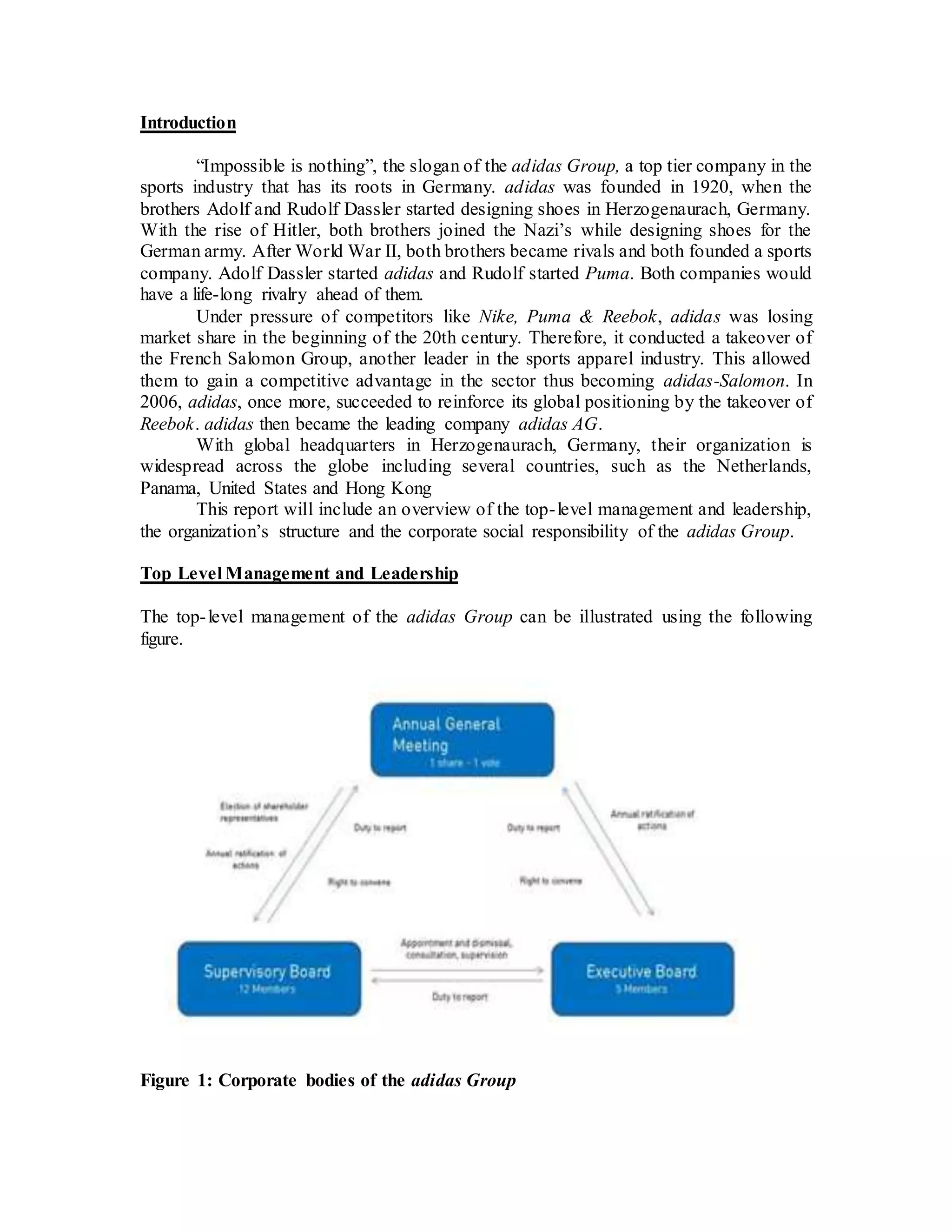
![The adidas Group consists of three corporate bodies: the Annual General
Meeting, the Supervisory Board and the Executive Board. [1] It is the latter, the
Executive Board, which is of importance when looking into the management structure
and leadership within the company.
The Executive Board is at the pinnacle of the company, responsible for the entire
management with focus on strategic management, financial control, compliance and risk
management.[2] Furthermore, the Executive Board represents the company and defines
the company policies.[3] In their decision-making processes they apply a high level of
focus on creating value for the company and its stakeholders, while also incorporating the
overall interests and values of the company as exemplified through their extensive history
in the industry.[4]
At the head of the Executive Board is the Chief Executive Officer, Herbert
Hainer, who was appointed by the Supervisory Board.[5] The CEO will have the
deciding vote in case of a draw in submitted votes when adopting new resolutions within
the Executive Board.[6]
Overall, it can be observed that the Executive Board at the adidas Group solely
consists of men, ages ranging from 49 to 61. On the basis of nationality, two members
represent the brand’s originating country, Germany, two Americans and one executive
from New Zealand. The adidas Group has notoriety for being a traditional, westernized
company in this perspective. Despite this makeup within top-level management, the
lower levels of the organizational structure pride itself on maintaining a youthful (average
age is approximately 30 years), diversified (employees from 79 different nations) and
gender-neutral (50% female) employee base. Whilst this might be the case at lower levels
within the company, there aren’t many signs of this vision within the top-level
management of the organization.
The adidas Group as an organization
Figure 2: adidas Group Organizational Structure](https://image.slidesharecdn.com/1ea2b9bd-dcba-47b4-9bdf-276e776f08f2-151117153047-lva1-app6891/75/adidas-Group-Management-Organizational-Structure-and-CSR-Analysis-3-2048.jpg)
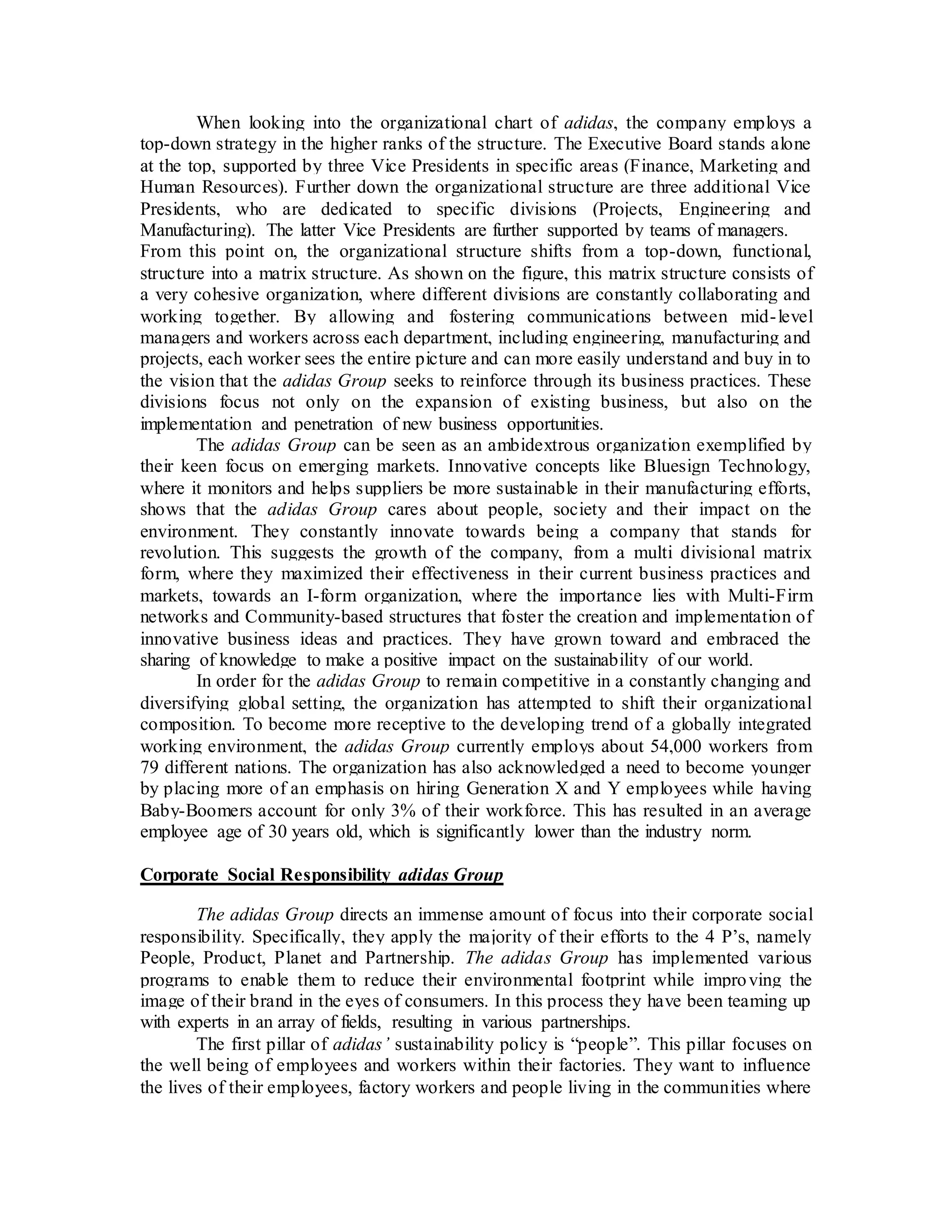
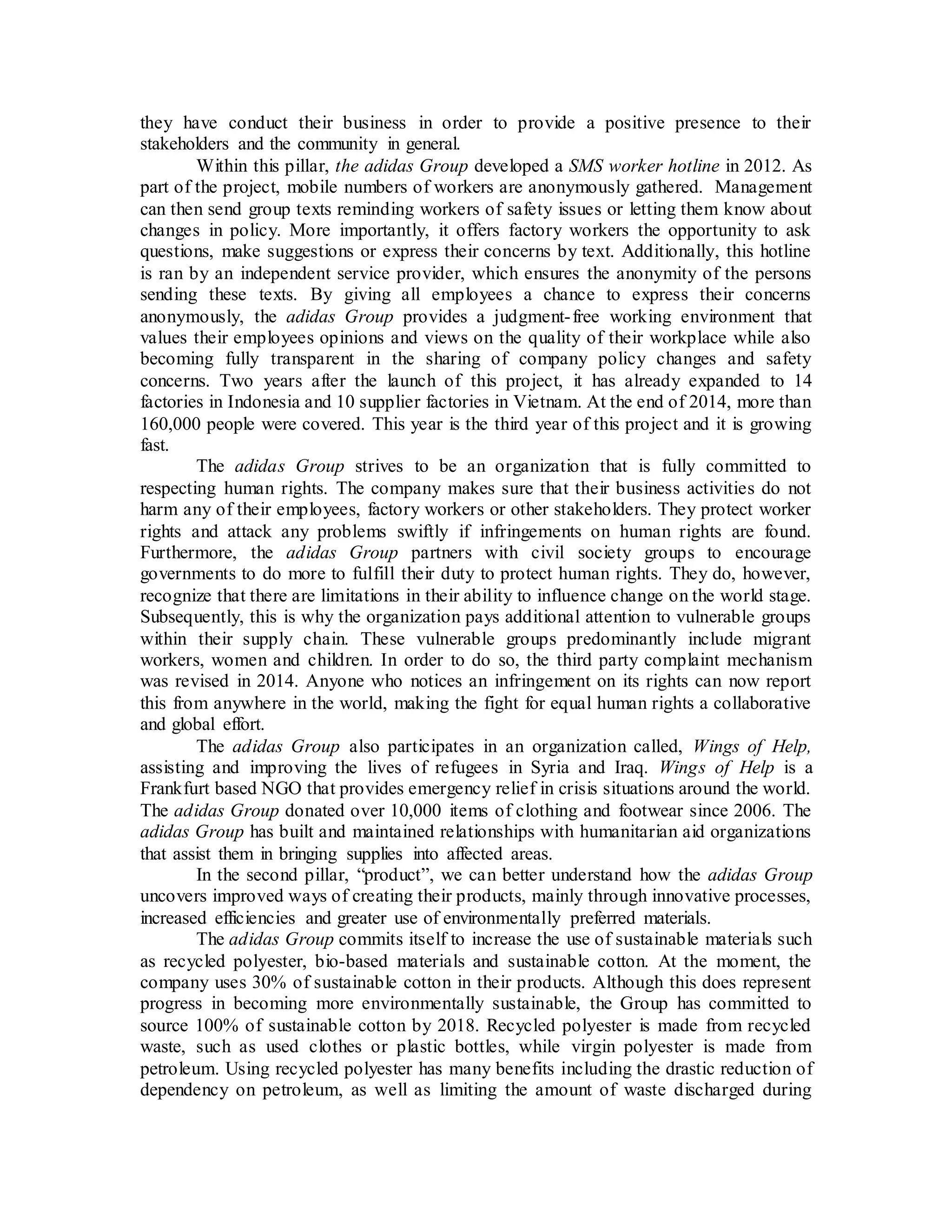
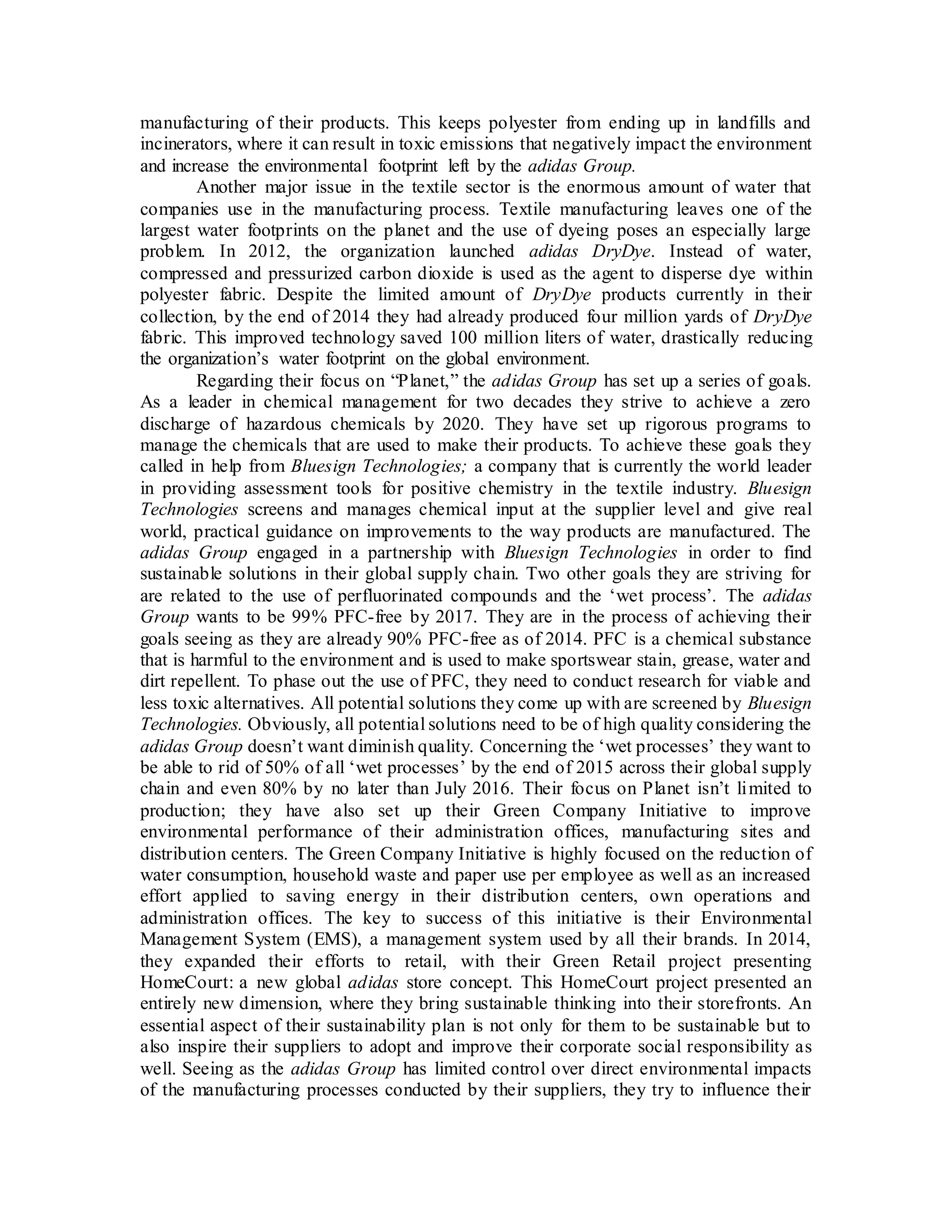
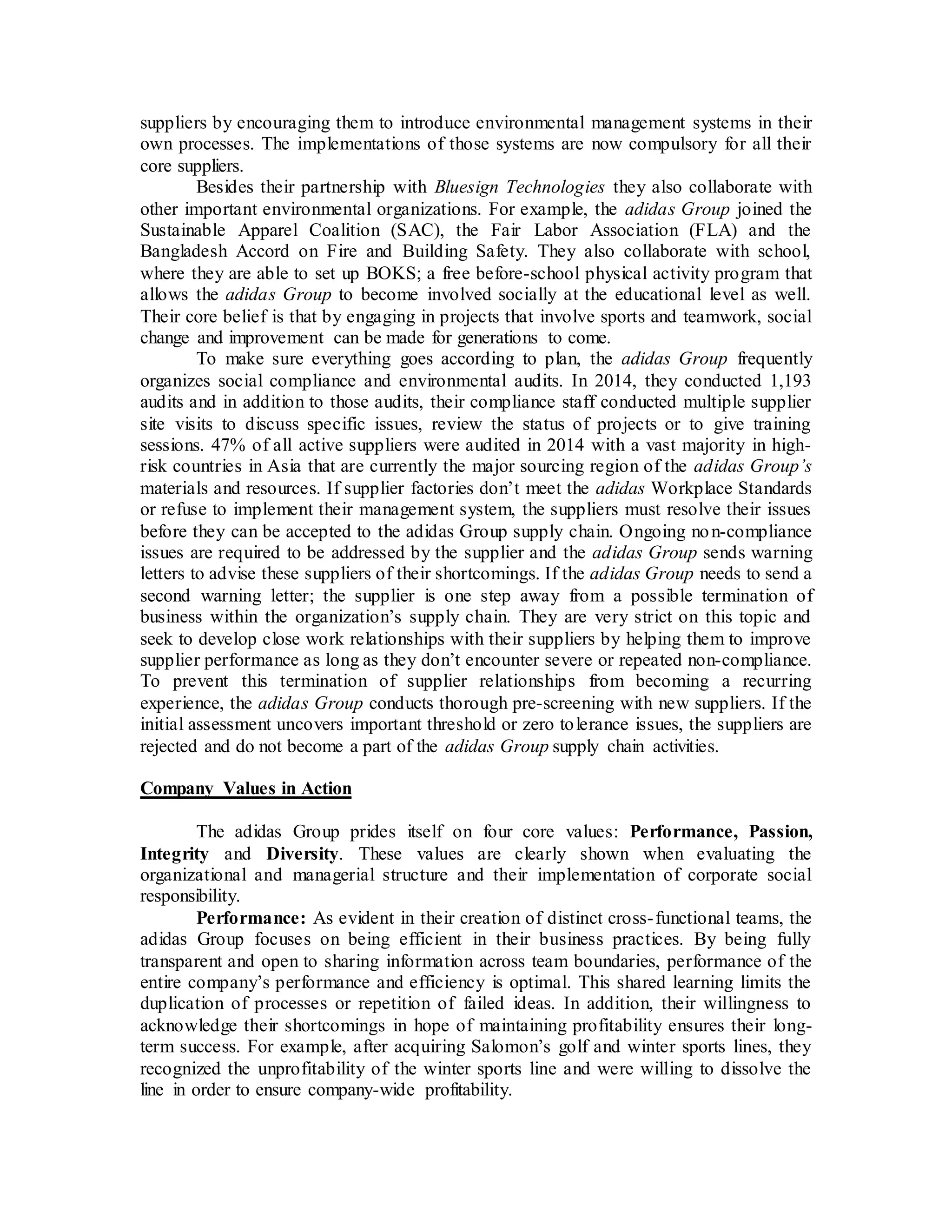
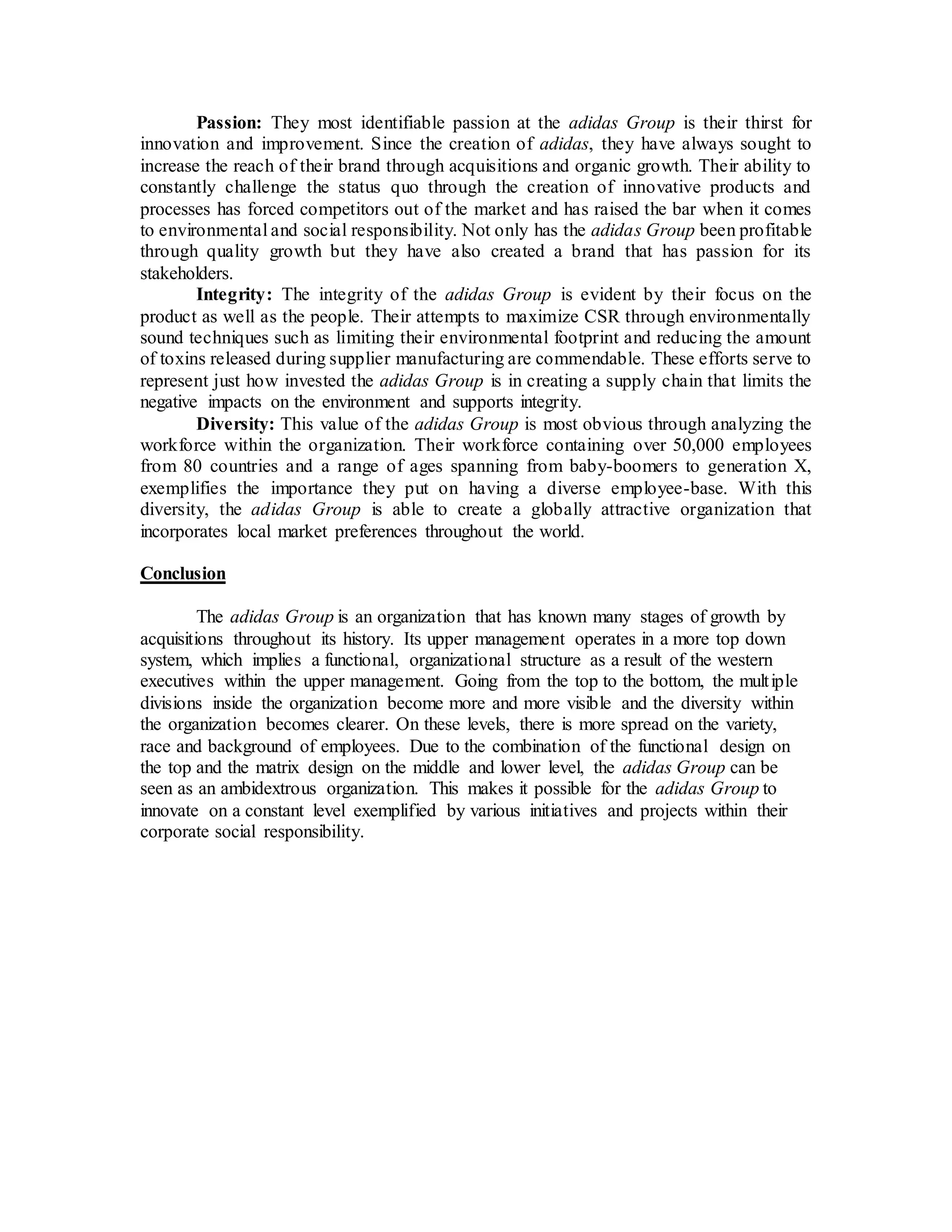
![[1] http://www.adidas-group.com/en/investors/corporate-governance/bodies/
[2] Art. 3 of the Rules of Procedure of the Executive Board of Adidas AG.
[3] Art. 3 (3) of the Rules of Procedure of the Executive Board of Adidas AG.
[4] Art. 1 (2) and art. 3 (2) of the Rules of Procedure of the Executive Board of
Adidas AG.
[5] In conformity with art. 6 of the Articles of Association of Adidas AG.
[6] Art. 7 of the Articles of Association of Adidas AG.](https://image.slidesharecdn.com/1ea2b9bd-dcba-47b4-9bdf-276e776f08f2-151117153047-lva1-app6891/75/adidas-Group-Management-Organizational-Structure-and-CSR-Analysis-9-2048.jpg)